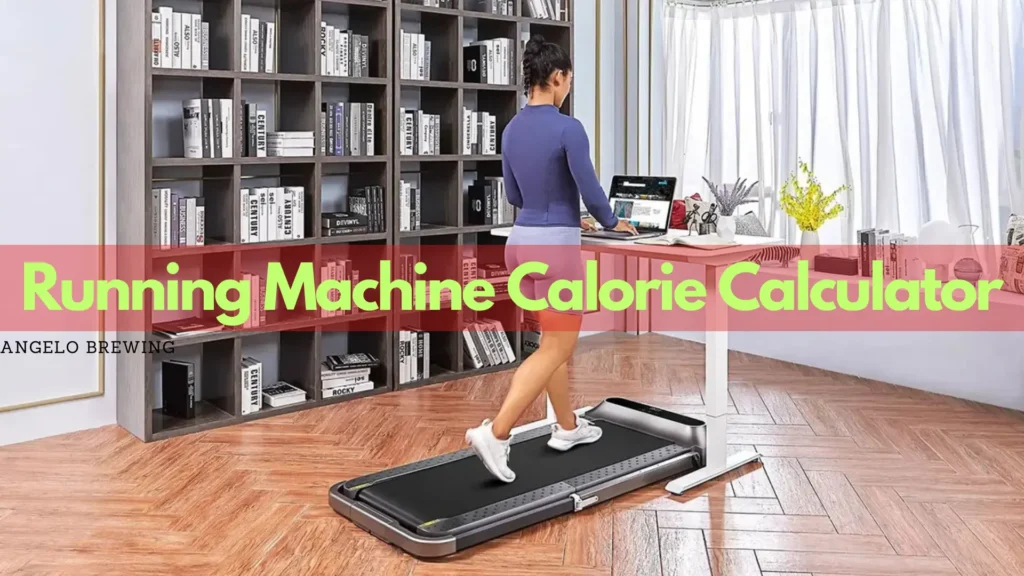Introduction
In the ever-evolving world of fitness, data has become the key to achieving results. Among the many tools that fitness enthusiasts rely on, running machine calorie calculators stand out as game-changers. These built-in features on treadmills and other running machines promise to help users track calories burned during workouts, enabling smarter training and better outcomes. But how accurate are they? And why should they matter to you?
In this guide, we’ll explore why calorie tracking on running machines is important, how these calculators work, and what makes their accuracy so crucial. By breaking down the science and technology behind them, we aim to simplify the complexities and empower you to make informed fitness decisions.

Why Calorie Tracking on Running Machines Matters
A Tool for Motivation and Progress
Tracking the calories burned during a workout isn’t just about numbers; it’s about progress. Seeing a quantifiable measure of your effort can inspire you to push harder and stay consistent. For many, it transforms exercise into a goal-oriented activity rather than a mundane routine.
Customizing Workouts for Better Results
Calorie calculators allow users to tailor their workouts to meet specific goals, whether it’s losing weight, building endurance, or maintaining a healthy lifestyle. Knowing the caloric output helps align your effort with your objectives, making each session more effective.
Connecting Effort to Nutrition
Calorie tracking bridges the gap between exercise and diet. Understanding how many calories you’ve burned can guide your nutritional intake, ensuring that you’re not under- or over-fueling your body.
How Running Machines Revolutionized Modern Fitness
Running machines, equipped with advanced calorie calculators, have redefined what it means to work out indoors. Unlike outdoor running, which requires manual tracking of distance, speed, and estimated caloric burn, running machines simplify the process. With built-in sensors and algorithms, they provide real-time data, allowing users to focus solely on their performance.
Additionally, these machines cater to all fitness levels, offering a range of features like adjustable inclines, preset workout programs, and even heart rate monitoring. They’ve become essential for urban dwellers with limited outdoor space, individuals managing unpredictable weather, and those seeking a controlled training environment.
By integrating technology, running machines have made fitness more accessible and data-driven, appealing to both casual users and serious athletes.
Purpose of This Guide: Simplifying Calorie Calculations
Calorie calculators on running machines can seem like magical tools, but they’re grounded in science and technology. This guide aims to demystify how they work, highlight their importance, and help you understand their limitations. Whether you’re a beginner or a seasoned runner, this information will empower you to maximize your workouts and achieve your fitness goals.
Understanding the Basics
What Is a Running Machine Calorie Calculator?
Definition and Functionality
A running machine calorie calculator is a built-in feature designed to estimate the number of calories burned during a workout. By analyzing specific metrics like weight, speed, duration, and incline, these calculators provide users with an approximation of their caloric expenditure.
Key Features
Modern running machines come equipped with various features to enhance calorie calculation accuracy, including:
- Personalized Input Options: Users can enter their weight and other details for tailored results.
- Real-Time Adjustments: Calculations update dynamically based on changes in speed, incline, or duration.
- Integration With Wearables: Some machines sync with fitness trackers for more precise data.
How Does It Work?
Data Inputs: Weight, Speed, Distance
Running machine calorie calculators rely on user-provided inputs like body weight, along with metrics recorded during the workout, such as speed and distance. Weight is particularly significant because heavier individuals burn more calories performing the same activity as lighter individuals.
The Role of MET (Metabolic Equivalent of Task)
The MET value measures the energy cost of physical activity relative to resting. Running machines use MET values to estimate caloric burn based on the intensity of your workout. For example, a higher MET value corresponds to running at a faster pace or steeper incline, leading to greater calorie expenditure.
Why Accuracy Matters in Calorie Counting
Benefits for Fitness Goals
Accurate calorie counting can make a significant difference in achieving fitness milestones. Whether you’re trying to lose weight, build muscle, or simply maintain your current health, knowing your caloric burn ensures you’re on the right track. It allows for better planning of workouts and dietary intake, aligning your efforts with your objectives.
Potential Pitfalls of Incorrect Calculations
Overestimating calories burned can lead to overeating, derailing weight loss efforts. Conversely, underestimating calories can result in under-fueling, leaving you fatigued and less likely to stick to your routine. Understanding the limitations of running machine calorie calculators helps avoid these common pitfalls, ensuring they’re used as a helpful guide rather than an absolute measure.
By understanding the functionality, benefits, and potential drawbacks of running machine calorie calculators, you’re better equipped to use them effectively in your fitness journey. Keep reading to delve deeper into their science, applications, and advanced tips for optimal accuracy.
The Science Behind Calorie Calculations
The Relationship Between Calories, Weight, and Activity
How Body Weight Impacts Caloric Burn
Caloric burn is directly influenced by body weight. Heavier individuals expend more energy to perform the same physical activity as lighter individuals. This is because moving a larger body mass requires greater effort, whether running at a steady pace or tackling an incline. For example, a 200-pound person may burn significantly more calories during a 30-minute run than someone who weighs 150 pounds at the same speed and intensity.
For running machines, weight is a critical input in calculating calorie burn. Without this personalization, the machine relies on default assumptions, which can lead to inaccurate estimates. Regularly updating your weight on the machine ensures the most precise feedback.
The Role of Heart Rate in Calorie Calculation
Heart rate plays a crucial role in determining the intensity of a workout. The harder your heart works, the more calories you burn. Many running machines are equipped with heart rate monitors that integrate this data into their calculations.
By using heart rate data, the machine can account for variations in effort that metrics like speed or incline alone might not fully capture. For instance, running at a slower pace with a high heart rate due to fatigue or heat can still result in significant calorie burn.
MET Values Explained
What Are MET Values?
MET, or Metabolic Equivalent of Task, is a standardized measure of energy expenditure. One MET is the energy cost of sitting quietly, equivalent to approximately one calorie per kilogram of body weight per hour. Activities are assigned MET values based on their intensity. For instance, jogging at 6 mph may have a MET value of 9, while walking at a leisurely pace might be around 3.
How Running Machine Algorithms Use MET
Running machines use MET values as the backbone of their calorie calculation algorithms. By combining MET data with user-specific inputs like weight and real-time performance metrics, these machines estimate caloric burn with reasonable accuracy. Adjustments in speed, incline, and duration dynamically change the MET value, ensuring the calculation reflects the workout's intensity.
Manual vs. Machine Calculations
Human Error in Manual Tracking
Manually calculating calories burned requires considering multiple variables, such as weight, activity intensity, and duration. However, most individuals lack the tools or expertise to factor in these elements accurately. As a result, manual estimates are often generalized and prone to errors, particularly for activities with varying intensity levels.
The Technology Behind Running Machine Calculations
Running machines eliminate the guesswork by using integrated sensors and algorithms to calculate calories burned. These technologies factor in inputs like speed, incline, heart rate, and MET values to provide real-time, data-driven estimates. While not perfect, this approach minimizes human error and offers a more reliable baseline for tracking progress.

Practical Applications
Setting Realistic Fitness Goals
How to Use Calorie Calculators for Goal Setting
Calorie calculators are excellent tools for setting achievable fitness goals. Whether your aim is to lose weight, improve endurance, or simply maintain your current fitness level, understanding how many calories you burn during a workout allows you to align your efforts with your objectives. For example, knowing that a 500-calorie deficit per day equates to roughly one pound of weight loss per week helps you design a balanced workout and diet plan.
Aligning Caloric Burn With Weight Loss or Maintenance
For those focused on weight loss, calorie calculators provide a roadmap for creating a caloric deficit, where calories burned exceed calories consumed. On the other hand, individuals aiming to maintain their weight can use these calculators to ensure they’re not over- or under-training. By tracking caloric burn consistently, you can adjust your activity levels and dietary intake as needed.
Customizing Your Running Machine Workouts
Adjusting Speed, Incline, and Duration
One of the most effective ways to optimize your caloric burn is by tweaking the variables of your workout. Increasing speed boosts intensity, while adjusting the incline engages additional muscle groups and elevates calorie expenditure. Similarly, extending the duration of your session can significantly enhance overall burn. Running machines make it easy to experiment with these factors, allowing you to find the perfect balance for your fitness goals.
The Impact of High-Intensity Interval Training (HIIT)
High-Intensity Interval Training, or HIIT, involves alternating short bursts of intense activity with periods of rest or lower-intensity exercise. This method not only maximizes calorie burn during the workout but also enhances the afterburn effect, where your body continues to burn calories post-exercise. Many running machines come with pre-programmed HIIT options, making it simple to incorporate this powerful technique into your routine.
Integrating Data With Wearable Tech
Syncing Running Machines With Fitness Apps
Modern running machines often feature Bluetooth connectivity, allowing them to sync seamlessly with fitness apps and wearables. This integration provides a holistic view of your fitness journey, combining workout data with other health metrics like daily steps, sleep patterns, and caloric intake.
Real-Time Calorie Monitoring
Wearable technology enhances the accuracy of calorie calculations by providing additional inputs like heart rate and oxygen consumption. When synced with running machines, these devices offer real-time feedback, ensuring your workout data is as precise and actionable as possible. This integration not only streamlines tracking but also helps maintain motivation by delivering immediate, measurable results.
By understanding the science and applying practical strategies, you can make the most of running machine calorie calculators, transforming them into a vital tool for your fitness journey.
Choosing the Right Running Machine
Key Features to Look For in Calorie Calculators
Display Accuracy
One of the most critical features of a running machine calorie calculator is its accuracy in displaying data. A reliable calculator should provide real-time updates and reflect changes in speed, incline, or duration. Machines with high-resolution screens and intuitive interfaces often offer a clearer, more detailed breakdown of metrics, making it easier to monitor progress during your workout.
Integration With Apps and Smart Devices
In today’s tech-driven fitness world, the ability to sync a running machine with apps and wearables is a game-changer. Integration with platforms like Apple Health, Fitbit, or MyFitnessPal allows you to consolidate your workout data in one place. This feature ensures that calorie calculations from the machine align with your overall health tracking, offering a comprehensive view of your activity and progress.
Top Brands and Models for Calorie Accuracy
Treadmill Comparisons: A Buyer’s Guide
When choosing a running machine, compare models based on their calorie calculator accuracy, customization options, and technology integrations. Key considerations include:
- Incline and Speed Adjustability: Machines with wide-ranging incline levels and high maximum speeds offer more versatility for calorie-burning workouts.
- Heart Rate Monitoring: Built-in or wearable heart rate sensors enhance calorie tracking accuracy.
- Stability and Durability: Ensure the machine can handle consistent use without compromising performance.
Reviews of Popular Running Machines
Here are some top-rated models renowned for their calorie calculator accuracy:
- NordicTrack Commercial Series: Offers precise calorie tracking, advanced incline adjustments, and app integration.
- Peloton Tread: Features engaging workout programs and real-time performance tracking synced with the Peloton app.
- Sole F85 Treadmill: Known for its durability and accurate performance metrics, including caloric burn.
Addressing Common Misconceptions
Do Running Machines Overestimate Calories Burned?
Factors Contributing to Overestimation
Running machines often use generalized algorithms to calculate caloric burn, which may not account for individual variations. Common reasons for overestimation include:
- Default Weight Settings: Machines without personalized weight inputs tend to inflate calorie numbers.
- Limited Heart Rate Data: Without real-time heart rate tracking, machines might overestimate effort and intensity.
How to Cross-Verify Accuracy
To ensure your calorie data is as accurate as possible, consider cross-verifying it using:
- Wearable Trackers: Devices like heart rate monitors or fitness bands offer additional data points.
- Online Calorie Calculators: Use trusted online tools to compare results and spot discrepancies.
- Manual Calculations: While less convenient, manual tracking can provide a baseline for comparison.
Are Calorie Calculators One-Size-Fits-All?
Individual Variations in Caloric Burn
Caloric burn varies widely based on factors such as age, gender, fitness level, and body composition. A machine’s default settings may not reflect these nuances, leading to less personalized results. For instance, two individuals running at the same speed might burn different amounts of calories due to differences in muscle mass and metabolic rate.
The Role of Personalized Data
Machines that allow users to input personalized data, like weight, age, and fitness goals, offer a more tailored approach to calorie calculations. Advanced models can even adapt over time by learning from your workout history and performance trends. This customization ensures that the data you receive is aligned with your unique physiology, making your fitness journey more effective and informed.
By understanding the features that matter most and addressing common misconceptions, you can select the right running machine and leverage its calorie calculator as an essential tool for achieving your fitness goals.
Advanced Tips for Accurate Calorie Counting
Improving Data Input Accuracy
Importance of Updating Weight Regularly
One of the simplest yet most overlooked factors in calorie tracking is keeping your weight data up-to-date. Since caloric burn is directly tied to body weight, even small changes can impact the accuracy of calculations. Make it a habit to update your weight on your running machine every few weeks or whenever significant weight changes occur.
Measuring Actual Heart Rate vs. Estimated
Many running machines estimate your heart rate based on speed and effort, which can lead to inaccuracies. Instead, use a chest strap or wrist-based heart rate monitor for more precise data. These devices provide real-time heart rate information that can enhance the machine’s calorie calculations.
Using External Tools to Enhance Accuracy
Pairing With Heart Rate Monitors
Heart rate monitors, especially chest straps, are highly accurate tools for tracking workout intensity. Many modern running machines allow seamless pairing with these monitors, integrating their data into the calorie calculation process for a more refined output.
Leveraging Online Calorie Tracking Tools
Complement your running machine’s data with online calorie tracking tools or apps. These platforms often allow for additional inputs, such as age, gender, and activity level, providing a broader perspective on your energy expenditure and overall fitness progress.
Health Benefits of Tracking Calories on Running Machines
Promoting Weight Loss and Cardiovascular Health
The Role of Running in Fat Burn
Running is one of the most effective exercises for burning calories and promoting fat loss. By tracking calories burned during your session, you can monitor your progress and ensure that your workouts align with your weight loss goals. Additionally, running improves cardiovascular health by strengthening your heart and boosting circulation, making it a key component of a healthy lifestyle.
Building a Sustainable Routine
Calorie tracking fosters a sense of accountability, which is crucial for building long-term exercise habits. Knowing the caloric impact of your workouts can motivate you to stay consistent, helping you establish a routine that’s both effective and sustainable.
Psychological Benefits of Progress Tracking
Encouraging Consistent Exercise Habits
When you can see your progress in real numbers, it’s easier to stay motivated. Calorie tracking helps translate your effort into tangible outcomes, making every workout feel purposeful and rewarding.
Gamifying Fitness Goals
Many running machines and fitness apps incorporate gamification elements, such as achievement badges or progress milestones, to keep users engaged. These features add a layer of fun to your workouts and encourage you to push toward new goals, making fitness a more enjoyable part of your daily life.
Summary
Recap of Key Takeaways on Running Machine Calorie Calculators
Running machine calorie calculators are powerful tools for tracking fitness progress. Their accuracy depends on personalized data, such as weight and heart rate, and integrating them with external tools can enhance their reliability. Understanding how these calculators work and how to use them effectively can help you achieve your health and fitness goals.
Final Thoughts: The Importance of Data-Driven Fitness
Incorporating technology into your workouts transforms exercise into a measurable and goal-oriented process. Running machine calorie calculators empower you to train smarter, not harder, by providing actionable insights into your caloric burn. By leveraging this data, you can create a balanced, effective fitness routine that supports long-term health and well-being.
FAQs
How Accurate Are Running Machine Calorie Calculators?
While running machine calorie calculators provide reasonable estimates, their accuracy depends on factors like personalized inputs and heart rate data. Using external devices or tools can improve their reliability.
Can I Improve the Accuracy of My Calorie Count?
Yes, you can enhance accuracy by updating your weight regularly, using a heart rate monitor, and cross-verifying results with online calorie tracking tools.
What’s the Difference Between Running Indoors and Outdoors for Caloric Burn?
Outdoor running often burns more calories due to environmental factors like wind resistance and varied terrain. However, running machines offer a controlled environment, making them a reliable alternative.
Are There Apps That Work Better Than Built-In Calorie Calculators?
Fitness apps like MyFitnessPal or Strava can provide additional insights and allow for more comprehensive tracking when paired with running machines.
What Other Metrics Should I Track Besides Calories?
In addition to calories, monitor metrics such as heart rate, distance, pace, and time to get a holistic view of your fitness progress. These data points can help you tailor your workouts for maximum efficiency and effectiveness.








